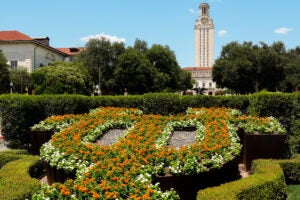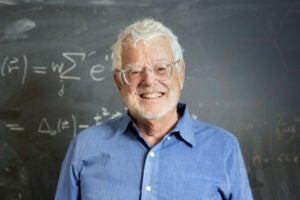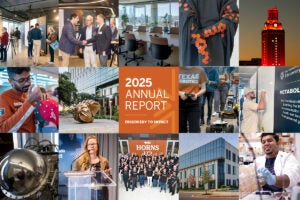We hear a lot of doom-and-gloom about the future.
The world will be too hot, too crowded. There will be too few resources and more competition for them.
We asked University of Texas at Austin researchers for the opposite — the ideas, technologies, policies or combinations that will make it possible for the world to be a better place in the future.
In this first installment of “The Big Question” series, Biomedical Engineering Professor Christine E. Schmidt responds to the question “What in your field could make the world a better place?”
____________________________

I believe that we will see unimagined advances in biomedicine and health care delivery in the next 10 to 25 years. Biomedicine is one of the most rapidly growing technology industries and biomedical engineering is described as one of the “fastest growing careers.”
As part of this growth, I predict more clinical applications of regenerative medicine, in which biomaterials and cell-based therapies are used for clinical tissue repair and targeted disease treatments. We will also see increasing clinical applications of adult stem cells, such as mesenchymal stem cells, which can be obtained from patients or donors through simple blood or bone marrow collection.
As these advanced cell and biomaterials biomedical approaches take hold, I foresee a parallel development of technological advances that are less expensive and which will have broader impact globally. In other words, as scientists and engineers push forward with the most technologically-advanced developments in stem cells, nanoparticles, and “smart” materials, there will also be a renaissance of simpler approaches and technologies that may only require minor up-dates to provide improved clinical impact.

I also believe that technologies will be devised to be available as point-of-care and in home-based settings. Bringing medicine and health care right to the patient is increasingly necessary to reach a wider patient population. To do this, there will be even greater merging of communications technologies with health care technologies to enable medical specialists to consult with health care workers world-wide, and to provide advanced medical advice and treatments at reduced costs and in locations where these treatments would not otherwise be available. These approaches will increasingly include, for example, medical diagnosis of diseases via image transfer using standard smart phones and remotely controlled, computer-assisted surgical procedures, to name a few.
Finally, I foresee an integration of many health-related fields to enable a more holistic approach to medical treatment there will be a merging of biomedical engineering, nutrition, environmental engineering, and rehabilitation fields, areas that currently do not overlap to any great degree. This integration will improve patient outcomes as well as be cost-effective an important consideration in the current economic climate.

To sustain these advances in technology, it is imperative that our educational system continue to develop students who are problem-solvers and who also have a broad, multidisciplinary training. We have already seen an increasing demand for students with biomedical engineering and biomedical sciences degrees, both at the bachelors and doctoral levels. This trend will continue. In addition, education of younger students in the sciences is a must, and I predict a stronger impetus from our government and private schools to integrate science into the curriculum of students at an earlier stage. More formal programs in science in Kindergarten are well within reach, and students at this age are eager to explore. It is essential to attract our future talent early, to entice our brightest students to pursue formal education in the sciences and technology.
Dr. Christine E. Schmidt is the B.F. Goodrich Endowed Professor in Materials Engineering in the Cockrell School of Engineering Department of Biomedical Engineering.



